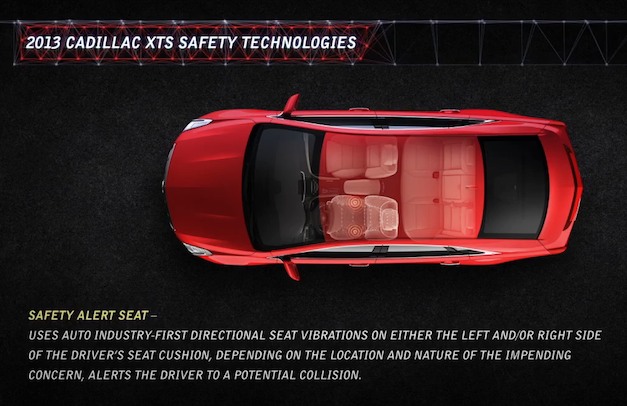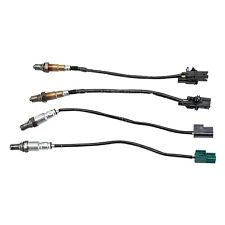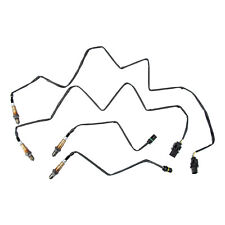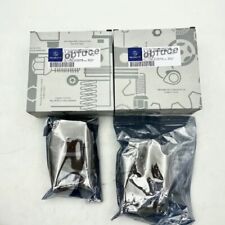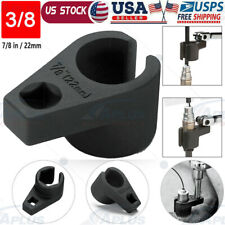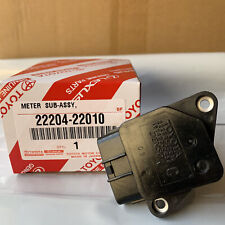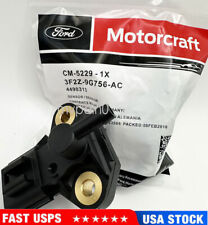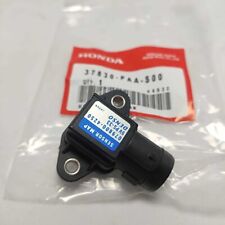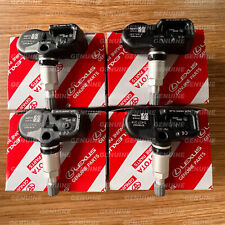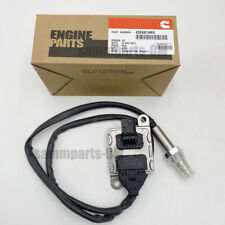Cadillac ATS, XTS get range of safety technologies, introduce seat vibrations alert
Cadillac announced today that it will introduce a range of new safety technologies on the new 2013 XTS and ATS sedans. The features will work via a network of cameras, radars and ultrasonic sensors to help drivers avoid crashes by improving their vision and awareness of their vehicle’s surroundings.
Check out more news on the Cadillac ATS.
[slider id=111586]
“New technology in the XTS and ATS is intended to extend the vision around the car to help drivers identify obstacles. When necessary, the vehicle may take action to help them avoid a collision,” said Don Butler, vice president of Cadillac Marketing. “Cadillac expands its lineup dramatically in 2013, and these technologies are an important component.”
Check out more news on the Cadillac XTS.
Check out a list and some videos after the jump.
The technologies are a part of the Driver Awareness Package, available for the launch of the XTS this spring and ATS this summer, and Driver Assist Package, available on XTS and ATS this fall. The technologies include:
Safety Seat Alert – Uses auto industry-first directional seat vibrations on either the left and/or right side of the driver’s seat cushion, depending on the location and nature of the impending concern, alerts the driver to a potential collision. Threats from the front and rear trigger pulses on both sides of the seats. It works with other visual alerts, and research shows it can quickly and accurately focus driver attention to the direction of potential crashes. It also may help drivers who may be annoyed by or not hear beeping alerts. The driver may also program the system to replace seat vibrations with beeps.
Forward Collision Alert – Radar and camera technology detect a possible front-end collision threat and alert the driver, giving him or her additional time to react. The driver can set the alerting time to far, medium or near settings.
Lane Departure Warning – A camera-based lane detection system alerts the driver of unsignalled lane changes. If a turn signal is used, it will not send a warning. The camera, mounted near the inside rearview mirror, identifies traffic lane markings. Lane Departure Warning activates at speeds above 35 miles per hour.
Side Blind Zone Alert – Using radar sensors on both sides of the vehicle, the system “looks” for other vehicles in the blind zone areas and indicates their presence with symbols lit in the outside mirrors. This technology alerts drivers to vehicles that otherwise might escape their vision. If the driver activates the turn signal in the direction of the detected vehicle, the symbol will flash to provide extra warning not to change lanes.
Rear Cross Traffic Alert – Using radar sensors, it warns the driver of approaching cross traffic when backing out of a parking spot. Left or right-side alerts are triggered if moving vehicles are detected. The system helps give drivers more time to react to obstacles that may be difficult to see in the side mirror.
Adaptive Forward Lighting – With adaptive forward lighting, the projector headlamps swivel in the direction of the front wheels to maintain forward lighting in concert with vehicle steering. Heading into a curve or turning around a corner, the headlamps swivel up to 15 degrees at varying speeds, depending on the severity of the curve and the vehicle speed. The system works with both low- and high-beam headlamp settings. The system improves visibility at night and in inclement weather compared to traditional headlamps, making driving easier.
Rear Vision Camera With Dynamic Guidelines – With a display in the center stack, the camera provides a natural view of objects directly behind the XTS or ATS. Dynamic guide lines laid over the video image assist in parking maneuvers by showing the vehicle’s path and available space.
Full-Speed Adaptive Cruise Control – This system uses radar and vision sensing to detect a vehicle ahead and calculate its distance and relative speed, and then sends a message to the onboard computer to maintain a driver-selected following time/distance. When the traffic has cleared or the object has moved, the system will accelerate the vehicle back to the previously set speed. Like conventional cruise control, the driver can always control the system by applying the brakes or accelerator.
Front and Rear Automatic Braking – Using radar and ultrasonic sensors, this feature can help prevent or mitigate front and rear collisions at low speeds via a progression of alerts that extends to complete braking if necessary. In effect, the system works like a “virtual bumper.” For example, if the vehicle is in stop-and-go traffic, the system will alert if the lead vehicle slows unexpectedly and, if needed, brake the vehicle to help prevent an impact or reduce impact speed.
Automatic Collision Preparation – When the XTS and ATS sense a collision is imminent, braking is applied to lessen the impact severity with the vehicle detected ahead, or even enable the driver to avoid the crash.
Intelligent Brake Assist – Detects a panic-braking situation and assists a braking driver by automatically applying added brake force to help slow the vehicle more quickly. This system uses radar and vision sensors to help the driver avoid or mitigate damage caused by a front-end crash.
– By: Omar Rana

